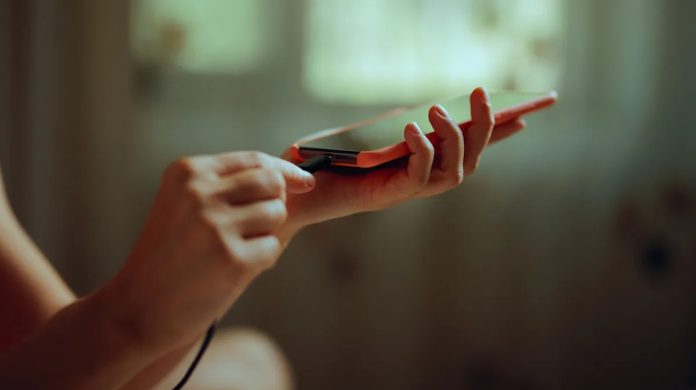Not too long ago, buying a new phone meant getting all the necessary accessories for its operation neatly tucked together in plastic cutouts in one holistic box. That’s where the concept of unboxing came from; a ritual of appreciation that characterized laying hands on each item for the first time. I got my very first phone at the age of six; a quaint black-and-white Starcomms intended for emergency calls to my parents. I remember reverently handling the purple box and pulling out tiny Ziploc bags containing a removable battery, and to get a little out of vogue here, an earpiece.
The year was 2008. That’s right — the average phone box of not so long ago included everything from chargers (and, as Android technology developed, screen protectors) to earpieces. The entire mobile phone ecosystem in one rectangular box, because what else was to be expected? An incomplete package? Surely not. It was unthinkable at the time that you’d need to buy anything separately.
Looking back, I couldn’t have been more wrong. Fast forward nearly two decades since my days as a toddler, and one of the latest topics in a long list of divisive tech evolutionary discourse is the place of USB cords in phone boxes. This debate would have been crazy to consider in 2008, and it’s still just as crazy to me now. At the risk of sounding like a parochial Luddite, some things need to stay the way they are.
Read more: 4 Useful USB-C Gadgets For Your Windows Laptop
The beginnings of a new meta

White iPhone 12 lying face down with its charger by its side – Wachiwit/Getty Images
Phone manufacturers have flirted with and implemented some removals from the phone box in the past; I’m throwing a thinly-veiled look of disgust and accusation at Apple. Before crossing over to the iOS ecosystem in March last year, I’d been an avid Android user; growing from a swashbuckling pre-teen all the way to my junior year in college. In fact, I’d rejected several gifts to switch over. My reason for this dogged mentality was simple: I viewed Apple as the epitome of consumerism.
Needing to pay for music and storage space seemed scandalous, if not downright predatory, to me barely ten years ago. However, that was the software side of tech, so consumers had optionality — or so I thought. When Apple announced that the iPhone 12 would break the mold of phone packaging by excluding charging bricks and earphones, I was impressed by its audacity. They’d finally gone and done it. There was absolutely no way customers were going to line up to buy an “incomplete” phone, so to speak.
Apple’s official reason for rocking the apple cart was to allow the shipment of more boxes by way of reduced size, and there was also an element of environmental consciousness in the decision-making. However, a tangible uproar followed the announcement. In fact, many casual users and Android competitors like Samsung were just as quick as I was to ridicule Apple’s perceived money grab of a business model.
The gradual disappearance of charging bricks from phone packages

iPhone 12 phone box – Nguyenducquang/Getty Images
To my utmost surprise, I was wrong again. Although the iPhone 12 launched at a price tag of $799 for the base model – $100 more expensive than its predecessor despite the lack of a charger or earbuds – it sold about two million models in the first day of preorders, smashing the 800 thousand its predecessor posted in the same timeframe.
Earphones disappeared from phone boxes around the same time, although this removal attributed to innovations in earbud technology. To be perfectly logical, earbuds are indeed a separate entity from earpieces: they cost far more to produce, and thus should have a separate cost. However, that’s not the case for other items that make up a traditional phone box.
Despite the aforementioned ridicule of Apple’s no-charging-brick policy, Android brands began to follow the iOS manufacturer’s lead. Samsung shipped the 2021 entry of its flagship S series, the S21, without a charging brick or earphones. And so it began; the widespread acceptance of a paradigm shift in the phone-purchasing sphere. You no longer received the entire supporting ecosystem in the palm of your hand. You now had to buy pieces of the puzzle yourself.
Holistic unboxing is not yet dead: Chinese Android brands staying true to tradition

Samsung SS2 Ultra and Galaxy Watch 4 at a phone store – jennywonderland/Shutterstock
That’s one point in favor of Chinese Android brands like Tecno and Xiaomi; I patronized these manufacturers extensively from 2016 to 2022. Every new purchase (most memorably my Xiaomi 11T in 2021) came fully outfitted with every complementary appliance, just like it used to be when I was a kid. Phone case? Check. Screen guard? Of course. The charging brick of the Xiaomi 11T was a highly specialized 67-watt beast that could juice the phone from 0 to 100 in just over 30 minutes. I shudder to imagine what charging that phone would’ve been like if I had used anything other than the default brick.
I didn’t need to buy anything extra to use the phone, as it should be! Imagine my surprise when I purchased a Samsung S22 Ultra the following year and found myself checking every nook and cranny of the box (even turning it upside down) in vain to find the charging brick. I wasn’t in the loop to know that mainstream Android brands had taken a leaf out of Apple’s playbook; I was only informed of the change when I subsequently reached out to a representative of the phone store to demand the delivery of my wall charger. I walked out of the store thoroughly befuddled that I had just paid $13 extra for an appliance that should’ve been in the box in the first place.
If you find yourself in a similar pickle, SlashGear listed 10 trustworthy charger brands you could check out.
USB cords next on the consumerism chopping block

Type-C cord placed just outside charging port of an iPhone – Viktollio/Shutterstock
That brings us to the topic at hand: a world where the next generation of phone boxes could be shipped without a USB cable. If you purchased a phone today and it came without a cable, you wouldn’t be remiss in assuming the manufacturer made a packaging error. However, if Sony’s latest brain wave in its Xperia 10 VII mid-range entry catches on, the omission isn’t a mistake at all.
Now, Sony might not necessarily be the most popular phone maker out there, but smoldering fires can ignite from the smallest of sparks. Given that the charger-less phone box took less than three years to become the order of the day, it’s not out of place to expect other big brands to follow Sony’s blueprint if there’s money to be made. After all, Apple already has some skin in this game; the AirPods 4 and AirPods Pro 3 were reported to have shipped without USB cables in their packaging.
Let’s go back to the charger bricks to understand brands’ reasoning behind these moves. Apple, prior to its Eureka moment, had shipped millions of devices to consumers over the years; each of which came with a charging brick. However, Apple chargers are designed to service a wide range of its products — you can use a Mac charger to juice up your iPhone or iPad, for instance. It would be a waste not to use that cross-functionality — at least on paper
The brand argument: Type-C cables are everywhere!

Messy wires scattered on the floor – art of line/Shutterstock
Hence, the peddled narrative was that phone users already had a ton of charger bricks lying idle around their houses or workstations from previous purchases. By removing the brick from the packaging of new devices, Apple could, per its official explanation, reduce the environmental impact of its phones through the consumption of fewer raw materials. According to the tech giant’s estimates, the removal would cut carbon emissions by around two million metric tons annually.
That’s no small figure, and that logic should extend to cover the topic of USB cables as well. With the introduction of USB-C technology (and its reluctant, if forceful, adoption by Apple due to EU guidelines), one could argue that there’s no need to ship so many cables anymore. Most modern phones use the Type-C cable, and by design, any USB-C cord can serve the needs of a USB-C device.
This state of affairs feeds into the rhetoric of environmental preservation since Apple pulled the plug on charging bricks. In 2019, more than 68% of phones were built with Type-C technology. While official figures tracking its market share growth are hard to come by, nearly every phone I come across today uses a Type-C receptacle. With this in mind, it stands to reason that consumers already have USB-C cables in abundant supply if they’ve been buying phones consistently since 2019.
The brand argument: wireless charging is the future!

Phone charging wirelessly beside a laptop – Lee Charlie/Shutterstock
As a personal example, I had a roommate in college last year who was obsessed with gadgets, and I’m positive I would have lost my mind if I had to have one more conversation with them about loose Type-C cables scattered across our apartment, many of which weren’t even actively in use. The point is, the USB-C’s ubiquity and cross-functionality, coupled with the existence of wireless charging, should realistically reduce the demand for cables.
This argument is also lent some credence by the appearance and growing popularity of wireless charging. There’ve been times when I’ve been too lazy to stretch to my wall charger. Blame my poor interior design skills, but my wall outlet lies directly behind my headboard. Instead of groping around in the tight space for my cable, I just stick my iPhone to the MagSafe as a handy substitute. It’s a lazy fix, but it works.
Despite these supporting arguments, I believe the decision to remove the accessory from phone packaging should ultimately reside with the buyer. Admittedly, the logistics of introducing consumer optionality in this regard can be unrealistic, so I support the next best thing: to include everything buyers expect to be in the box.
Personal opinion: You’ll be needing a new charger no matter what

Charger in a shopping cart – audiznam260921/Shutterstock
Manufacturers may claim to be environmentally conscious with the removal of the charging brick and now the USB cord, but there’s no doubt in my mind that the motivation behind these changes is the desire to expand profit margins. It’s a classic ploy known as “greenwashing” – marketing a company to seem environmentally friendly despite its insidious activities.
Let’s examine Apple as a case study in this regard. According to the Daily Mail, Apple is thought to have squeezed out an estimated 225 million pounds from the sale of accessories like chargers and earphones – items that were previously part of the iPhone packaging.
So the big question is this: Why is Apple turning such a profit in this department if, as it claimed, there is such potential for environmental positivity? The argument that users already have functional chargers, and thus shouldn’t get new ones shipped with their phones, doesn’t hold water at all.
It’s safe to assume that each new phone release comes with the most updated, state-of-the-art tech. Specifically relating this to the charging brick/USB cord situation, some of these devices are built to handle power capacities that older cables can’t supply. That directly affects charging speed. If your old charging brick or USB cable can’t handle the required wattage for optimal charging, odds are you’ll be visiting the manufacturer’s store to get a new charger anyway to solve the inconvenience.
Personal opinion: Wireless charging is, at best, a backup to wired

An iPhone being placed on a wireless charger – Skrypnykov Dmytro/Shutterstock
As for wireless charging and its “replacement” of traditional wired means, the concept is, as of today, still better than what actually exists in real life. Don’t get me wrong — the tech has improved considerably from the days where charging speeds barely challenged the 5-watt mark, but there’s a wide chasm both in speed and efficiency between wired and wireless means.
Inherently, wireless charging wastes a non-negligible amount of energy; there’s a lot of conversion between electrical forms, which means a significant portion of power is lost as heat. Learn more about how wireless charging works. Although wired charging is also not 100% efficient itself, it’s pretty close, and we’ve seen speeds cross the 100-watt mark in phones like the Motorola Edge 50 Pro and the OnePlus 13, to name a few. Wireless, on the other hand, is only recently crawling into 15-watt territory with Apple’s MagSafe and 25 watts through the new Qi2 standard.
In plain English, wired charging offers more juice in a fraction of the time that wireless does, and it looks like it will stay that way for quite some time. The extra power draw and heat generation from wireless charging means that it’s just as harmful, if not moreso, than using wires in the first place. This begs the question: was the environment ever the reason for this change of tack in the first place? It’s highly unlikely.
Personal opinion: Stop removing items from the box!

Unboxing a black iPhone – Marian Weyo/Shutterstock
Smartphones are more expensive now than ever before – and that’s not accounting for the costs the average user will incur from purchasing charging bricks, earbuds, and, if Sony has its way, USB cords. A brand-new Samsung Galaxy S7 cost $670 in 2016. By 2019, the Galaxy S10 was on sale for $900. This year, the flagship Samsung Galaxy — the S25 Ultra — launched at $1,200. Price has nearly doubled from barely a decade ago, and reductions don’t seem to be anywhere on the horizon, especially if you’re in the United States due to tariffs.
The bottom line is this: consumers are spending way more on phones than they used to, and they’re getting less in the deal. Charging bricks and earpieces have long gone to the graveyard, but Sony’s new idea to throw yet another component by the wayside highlights a dangerous trend. I say this only half-jokingly: it may not be long before we need to pay to assemble our phones ourselves. If I have to pay over $1,000 for a phone, I don’t think I’m being unreasonable to expect a complete package of appliances handed over to me. Whether or not I “need” them should primarily be my business, and it’s not the manufacturer’s place to make decisions for me.
Want the latest in tech and auto trends? Subscribe to our free newsletter for the latest headlines, expert guides, and how-to tips, one email at a time. You can also add us as a preferred search source on Google.
Read the original article on SlashGear.








